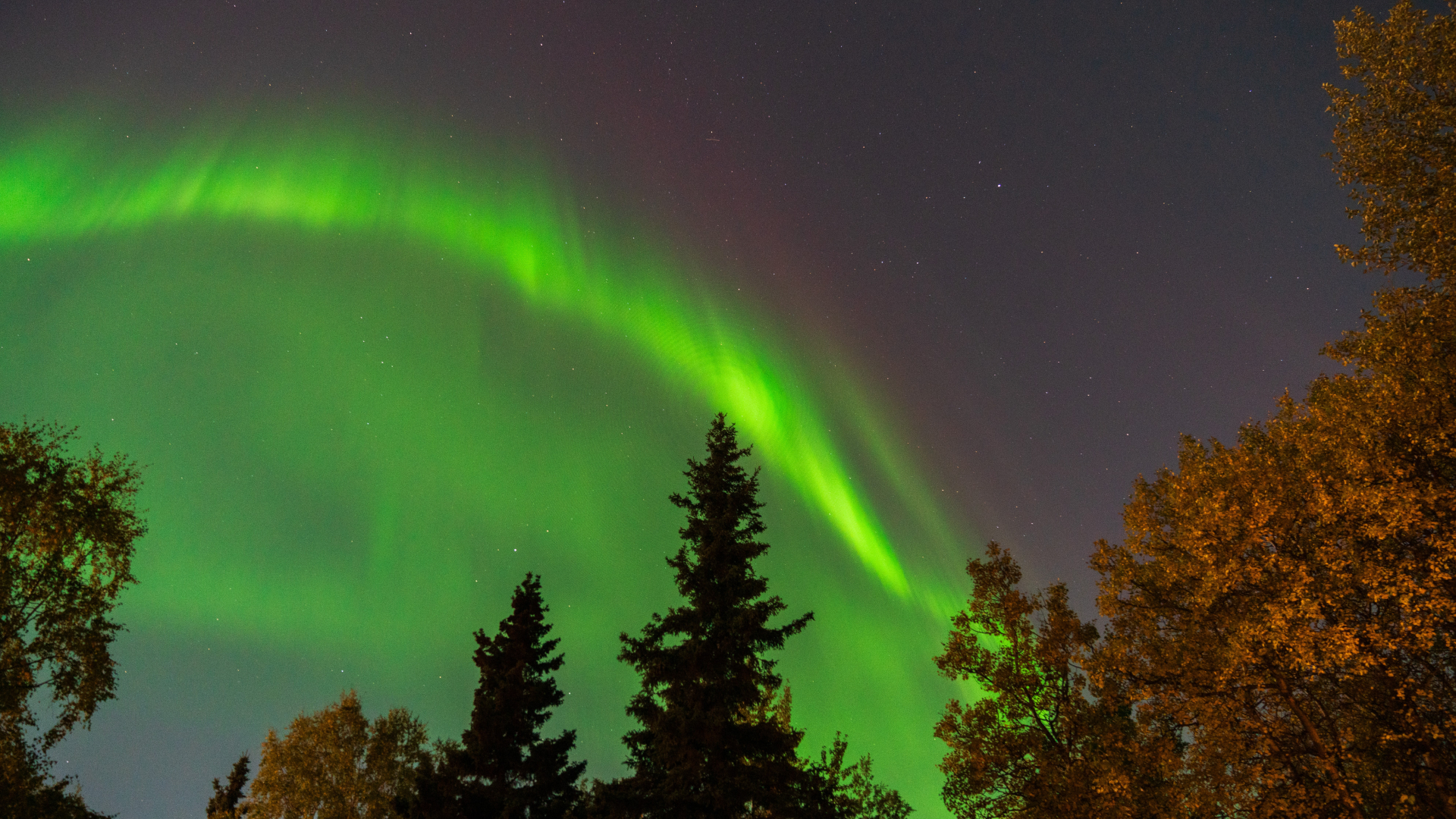
Better late than never.
Rolling in about 6 hours later than predicted, a huge plume of plasma and magnetic field from the sun, known as a coronal mass ejection (CME) slammed into Earth, triggering a severe geomagnetic storm.
The CME hit around 7:41 p.m. EDT (2341 GMT) on Sept. 16, triggering a dazzling northern lights display visible as far south as the Texas Panhandle.
The CME was released during a colossal X-class solar flare eruption on Sept. 14. The X4.5 solar flare peaked at 11:29 a.m. EDT (1529 GMT) and was the fifth largest solar flare of the current solar cycle.
CMEs carry electrically charged atoms, known as ions. When these ions collide with Earth's magnetosphere, they can trigger geomagnetic storms — major disturbances in Earth's magnetosphere. During such storms, the ions interact with gases in Earth's atmosphere, releasing energy in the form of light. This light is observed as the northern lights, or aurora borealis, in the Northern Hemisphere, and the southern lights, or aurora australis, in the Southern Hemisphere.
The National Oceanic and Atmospheric Administration (NOAA) classifies geomagnetic storms using a G-scale that measures their intensity, ranging from G1 for minor storms to G5 for the most extreme ones. NOAA had previously issued an alert for possible G3 conditions on Sept. 16, these were then superseded by even more severe G4 conditions around 10:57 p.m. EDT (0257 GMT on Sept. 17).
The strong geomagnetic storm conditions experienced last night were relished by aurora chasers across the U.S. (those who were still awake anyway).
Dakota Snider caught a stunning display in the skies above Kingman, Arizona last night.
"The surprise of seeing red pillars with your naked eye, through an almost full moon, in Arizona last night had me so excited!" Snider told Space.com in an email.
"This solar cycle has been incredible over the last year," Snider continued.
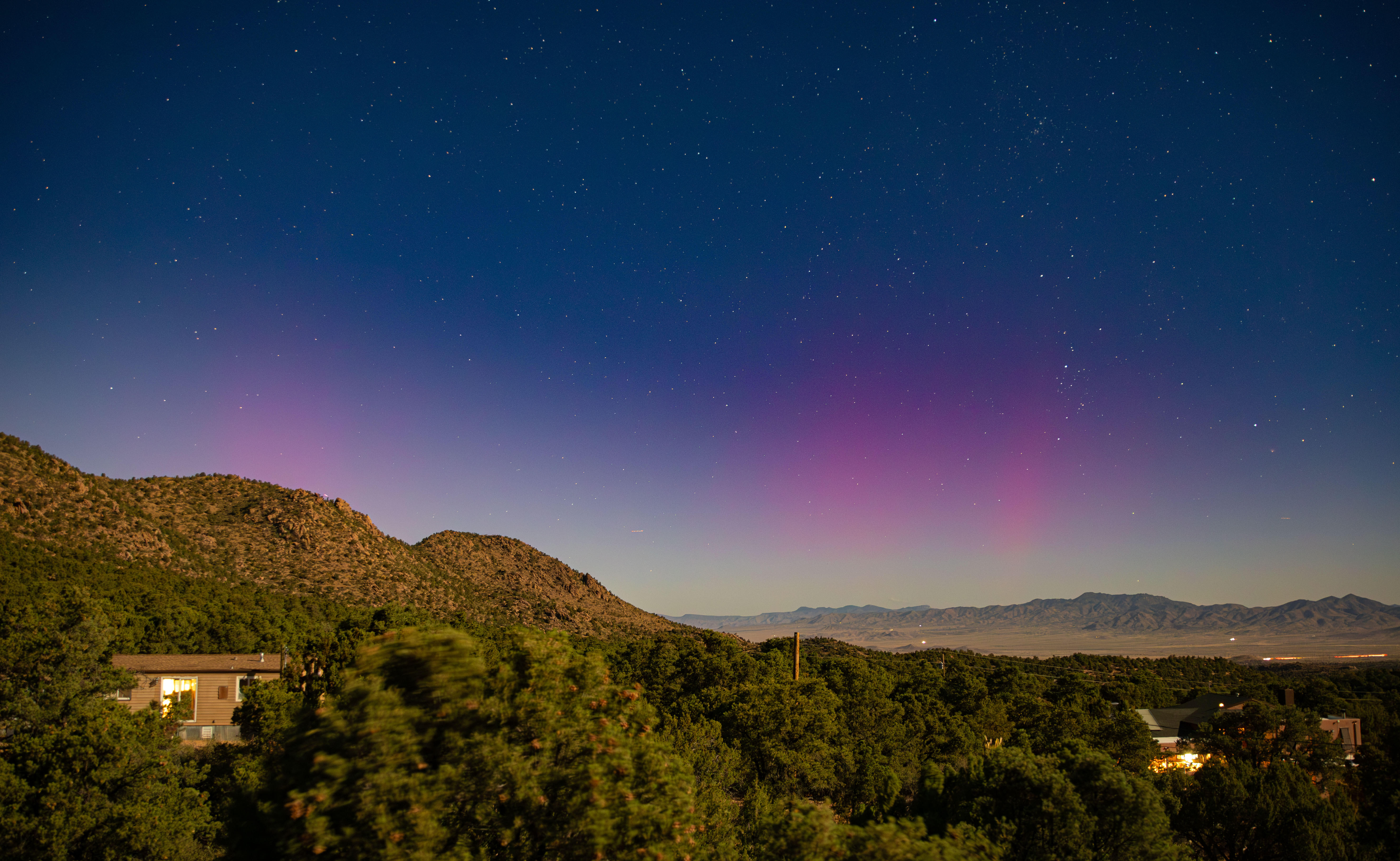
Photographer Mert Alper Dervis captured a lovely northern lights display over Lake Simcoe, north of Toronto, Ontario on Sept. 17.
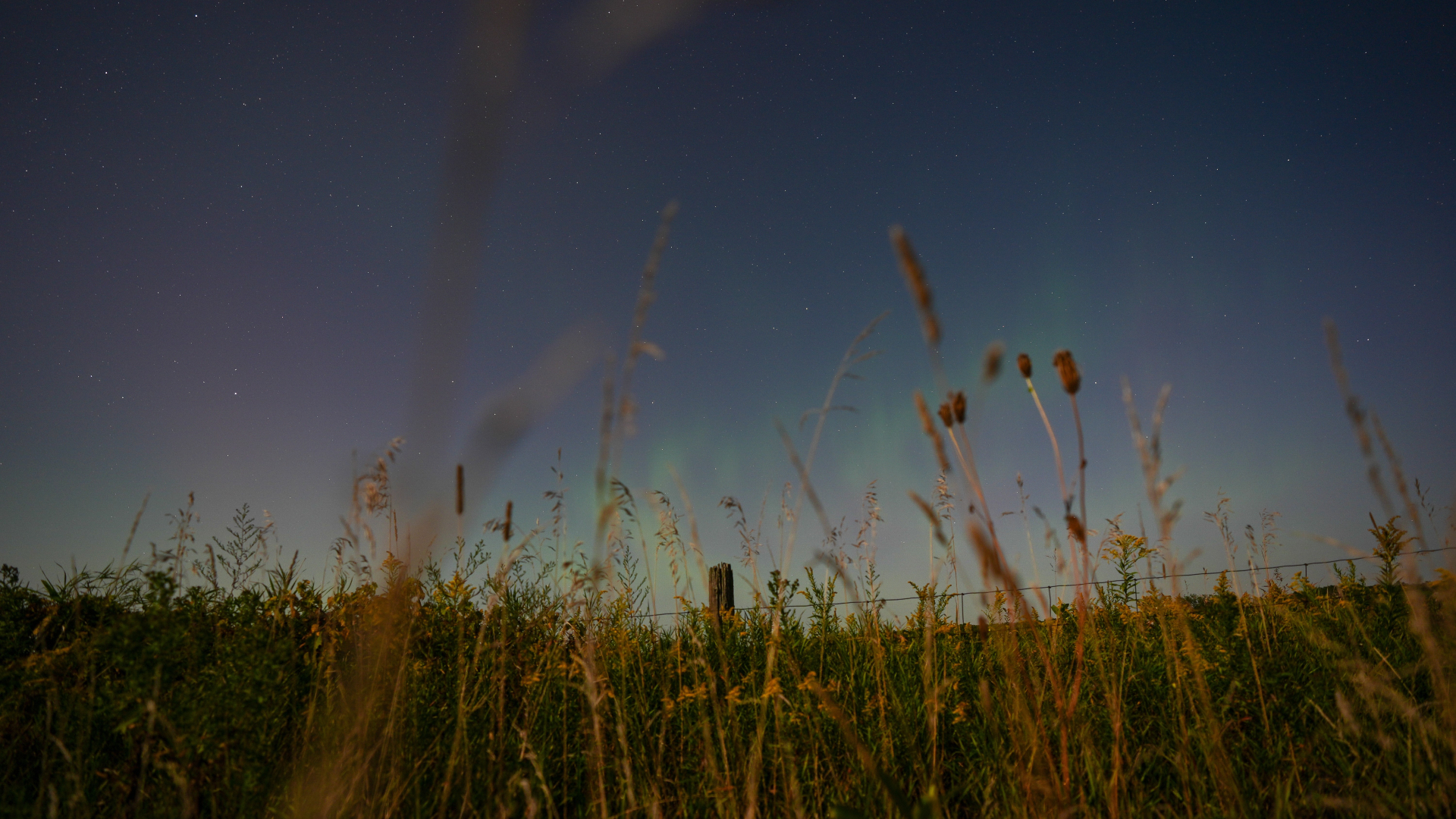
Aurora hunter Harlan Thomas captured a beautiful northern lights show from Highway 766 NE of Calgary, Canada.
Thomas kept a watchful eye on space weather forecasts to perfectly time this stunning photo.
"It was a really nice pillar show and I managed to capture it by watching the solar wind data, and the GOES West magnetometer. I figured that I had about an hour after the Bz dropped out to catch the aurora, my timing was almost perfect." Thomas wrote in a post on X.
"The Likelihood of Nothing"Highway 766 NE of Calgary 20240915T0422ZThe first aurora substorm occurred at approximately, 0400 UTC, it was brief lasting all of 30 minutes. It was a really nice pillar show and I managed to capture it by watching the solar wind data, and the GOES… pic.twitter.com/pZaGE6VTrLSeptember 15, 2024
Photographer Hasan Akbas captured auroras dancing above Alaska on Sept. 16.
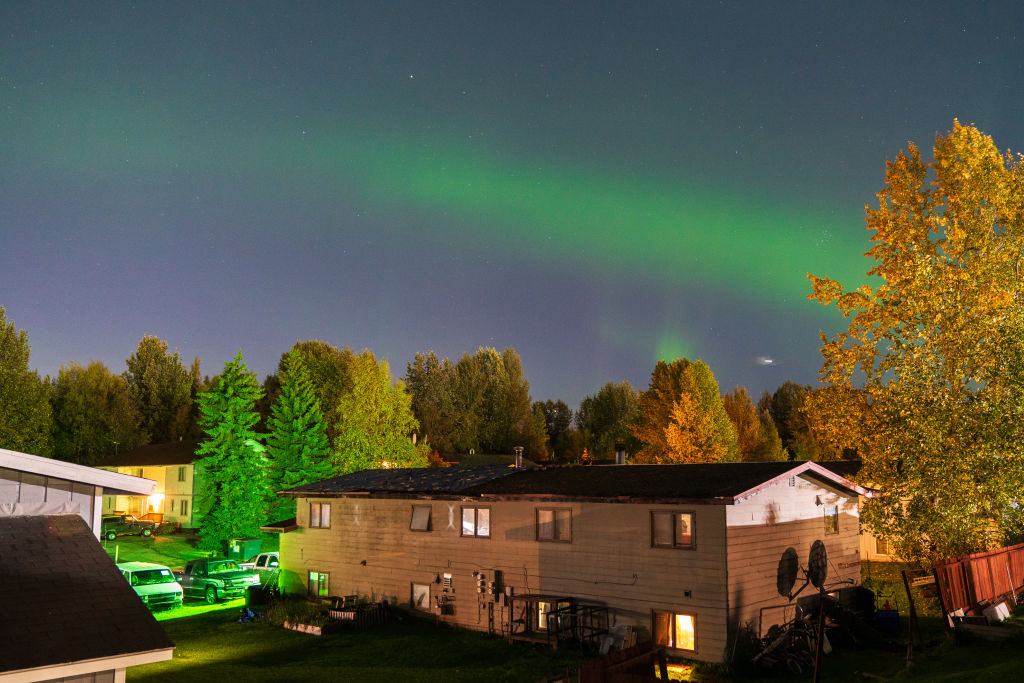
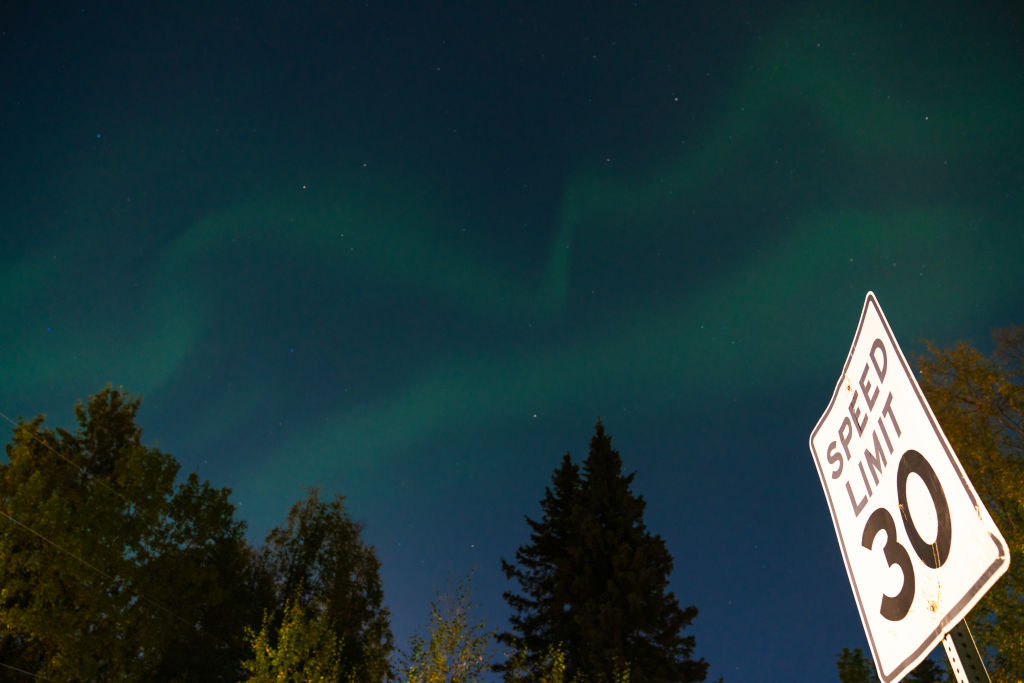
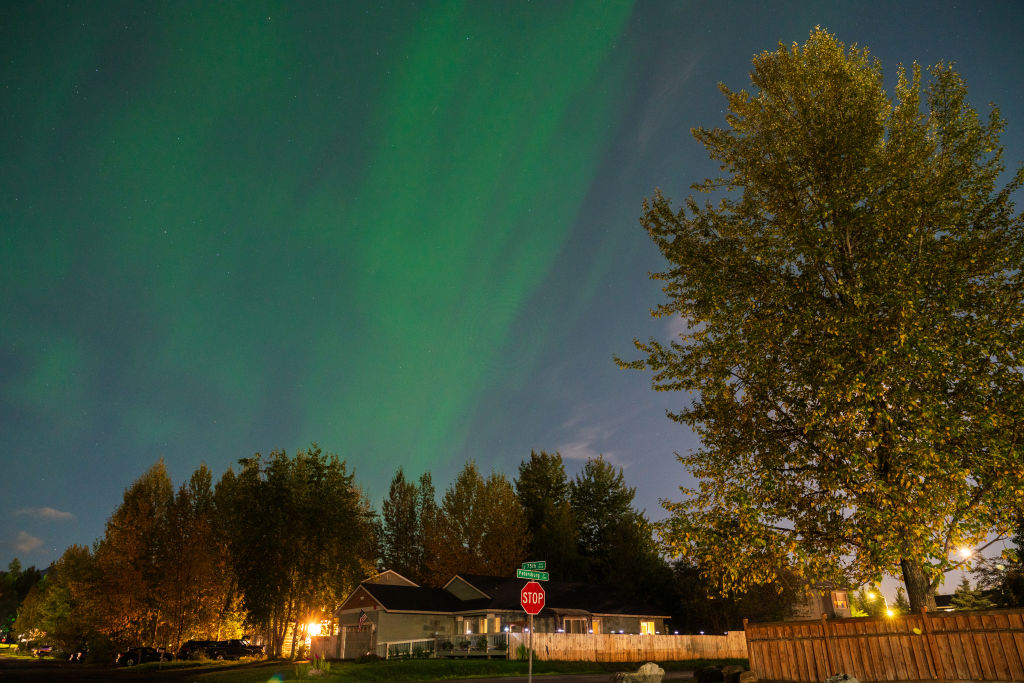
Aurora chaser Rj Roldan caught a vivid aurora display light up the skies of South Indian Lake, Manitoba, Canada.
"The skies of South Indian Lake, Manitoba lit up with beautiful colors! Short but sweet colorful show." Roldan wrote in a post on X.
Tonight’s stunning #aurora display from the X4.5 #solarflare #CME arrival. The skies of South Indian Lake, Manitoba lit up with beautiful colors! Short but sweet colorful show.#tweetaurora #northernlights #auroraborealis #astronomy @TamithaSkov @AuroraJAnderson pic.twitter.com/UMiC9dk6nHSeptember 17, 2024
Meteorologist Corbin Voges reported a brief appearance from the northern lights as far south as the Texas Panhandle, in a post on X.
"It didn't last very long, but I can confirm that the #NorthernLights made a brief appearance in the Texas Panhandle just before 10:30PM CDT," Voges wrote.
It didn't last very long, but I can confirm that the #NorthernLights made a brief appearance in the Texas Panhandle just before 10:30PM CDT. #Aurora @ABC7Amarillo @StormSearch7 @natwxdesk @NWSAmarillo pic.twitter.com/nqZz33O6plSeptember 17, 2024
Space weather enthusiast Tyler K also took to X to post a couple of aurora shots just south of Decatur TX.
"Texas checking in! Just south of Decatur TX"
Texas checking in! Just south of Decatur TX pic.twitter.com/KHDGxUpbnUSeptember 17, 2024
Storm chaser and aurora hunter Jake Stehli captured the northern lights dancing above southeastern Wisconsin, U.S. in a beautiful video.
Check Out the very brief but bright #aurora last evening over Southeastern Wisconsin near Hartford!#wiwx @TamithaSkov @accuweather @Mark_Baden @Tom_Wachs #northernlights pic.twitter.com/B5BUoZ9PvWSeptember 17, 2024
The almost fully illuminated Harvest Moon was no match for the stunning light show.
"Moon light couldn't stop her from dancing. Bright aurora in Northern Ohio!!" Tyler Hofelich wrote in a post on X.
Moon light couldn't stop her from dancing. Bright aurora in Northern Ohio!! @TamithaSkov@AuroraNotify @EricElwell_TV @KellyDWeather @RossElletWX #aurora #NorthernLights pic.twitter.com/d4igGTTeTCSeptember 17, 2024
Photographer Jeff Baurs took to X to post a beautiful photo of a fleeting aurora display above Delton, Michigan, U.S.
"The Northern Lights put on a good show for about 10 minutes, despite the almost full moon drowning most of it out," Baurs wrote.
"Could see faint red with the naked eye for a few minutes."
The Northern Lights put on a good show for about 10 minutes, despite the almost full moon drowning most of it out.Could see faint red with the naked eye for a few minutes.Delton, MichiganSeptember 16, 2024. 11:26 pm.#NorthernLights #FullMoon #Delton #BarryCounty #Michigan pic.twitter.com/FWBD27Rh92September 17, 2024
Editor's note: If you snap a great picture of the northern or southern lights and would like to share it with Space.com's readers, send your photo(s), comments, and your name and location to spacephotos@space.com.







